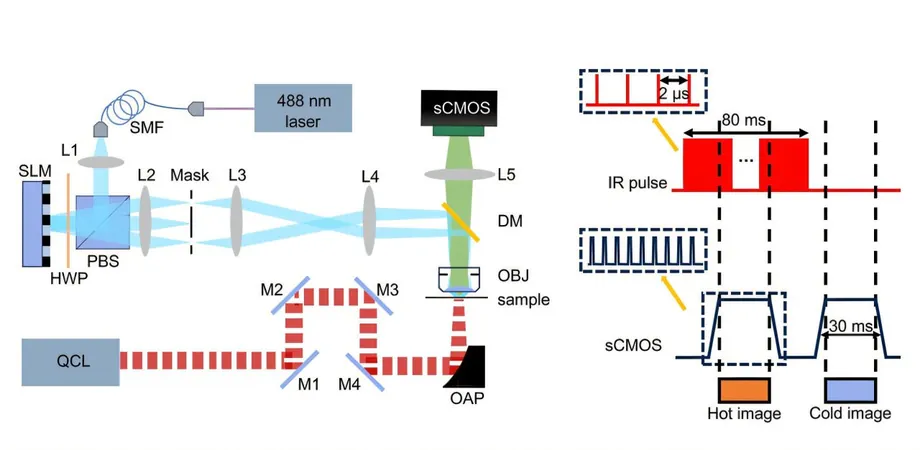
Revolutionizing Nanoscale Chemical Imaging: Meet SIMIP!
2025-04-14
Author: Nur
A Groundbreaking Leap in Microscopy Technology
In the fascinating realm of nanotechnology, super-resolution microscopes have already reshaped how we observe materials at an atomic level. But there's a catch: these high-tech wonders mainly depend on fluorescent tags that illuminate structural details but fall short when it comes to providing in-depth chemical information about the subjects under scrutiny.
Vibrational Imaging: A Solution to Limitations
This limitation spurred scientists to innovate vibrational imaging techniques, which expertly identify molecules by their unique chemical bonds without altering the samples themselves. These advanced techniques exploit physical changes in materials when they absorb mid-infrared (MIR) light—detecting shifts in refractive index or acoustic signals. However, previous methods often struggled to balance high resolution with robust chemical contrast, making the quest for clearer images a daunting challenge.
Introducing SIMIP: A Game Changer in Imaging!
Enter the spotlight: the new structured illumination mid-infrared photothermal microscopy (SIMIP) technique, recently unveiled by researchers at China's Zhejiang University, led by the esteemed Prof. Delong Zhang. This revolutionary method breaks through existing barriers, delivering double the resolution compared to traditional microscopy!
How Does SIMIP Work?
Zhang explains that SIMIP brings together structured illumination microscopy and mid-infrared photothermal detection. The mid-infrared photodetection offers pivotal chemical specificity, while structured illumination microscopy enhances spatial resolution.
The intricate system employs a quantum cascade laser (QCL) to excite specific molecular bonds, instigating localized heating that dims nearby fluorescent molecules. Alongside this, a clever SIM setup consisting of a 488-nm continuous-wave laser and a spatial light modulator (SLM) creates striped light patterns projected onto the sample at various angles. This not only enhances clarity but ensures that high-frequency details previously unseen are captured.


 Brasil (PT)
Brasil (PT)
 Canada (EN)
Canada (EN)
 Chile (ES)
Chile (ES)
 Česko (CS)
Česko (CS)
 대한민국 (KO)
대한민국 (KO)
 España (ES)
España (ES)
 France (FR)
France (FR)
 Hong Kong (EN)
Hong Kong (EN)
 Italia (IT)
Italia (IT)
 日本 (JA)
日本 (JA)
 Magyarország (HU)
Magyarország (HU)
 Norge (NO)
Norge (NO)
 Polska (PL)
Polska (PL)
 Schweiz (DE)
Schweiz (DE)
 Singapore (EN)
Singapore (EN)
 Sverige (SV)
Sverige (SV)
 Suomi (FI)
Suomi (FI)
 Türkiye (TR)
Türkiye (TR)
 الإمارات العربية المتحدة (AR)
الإمارات العربية المتحدة (AR)